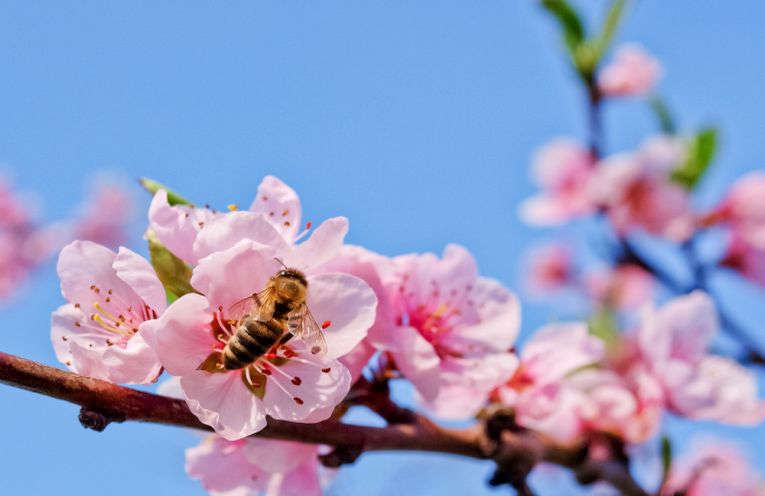Earth Times especially covets the work of researchers on horse (the horse species of North America are covered in - Wild Horses from America) and dog and any primate, but we must admit to some jealousy of peach researchers. While China has long been the home of the domesticated peach in many people's eyes, the Lower Yangzi valley was not a suspect. The name of the little tree of Prunus persica could well be P sinensis or P. shanghaica if only our ancestors had been tuned in to real inheritance.
The Chinese precede Gregor Mendel and many plant growers by 7,500 years and have in their region plants such as apricot, camellia, mandarin, mulberry, bayberry, lychee, jujube, chestnut and hazel with which they could work. Rice was developed by these Liangzhu people, too, so they have a pedigree to be envious of. They probably grew soybean and millet too. Yunfei Zheng, Gary W. Crawford and Xugao Chen of the Zheijiang Provincial Institute of Relics and Archaeology and Toronto University present some interesting evidence in PLOS One's- Archaeological Evidence for Peach Cultivation and Domestication in China.
The cloning of the peach in those ancient times, by use of rootstock and graft, involved a small-fruited wild and woody perennial. The research involved gathering stone samples from Ikiriki sites in Japan (from the Jomon culture) and 5 sites in the lower Yangzi. These stones are never found in Korea for this period, but the river beyond Shanghai points directly to the SW Japanese island of Kyushu, providing an "easy" trade route, 800km (500 miles) away. These hard stones of the "drupe," packed with bitter cyanidic glucoside, make the peach incredibly easy to locate in archaeology, so we can probably expect more interest from this work.
As a member of the rose family, peaches have several close relatives such as the almond. The Gansu and the Tibetan and mountain peach are separate species that may well have had a hand in the evolution of the modern cultivated peach, as they are interfertile. The Tibetan peach, Prunus mira, would be the ancestor of them all, if that were the case. The stones tell the story in size increase, as levels of domestication rise and in the shape change from a sphere to an ovoid. The modern fruits are also more fleshy and have more varied fruit-maturity times as well as a more rapid rate of maturation. This research followed the pattern of identifying stone size with fruit size, but it's not always true
In the oldest sites, studied, society is complex, with well-developed pottery and involved using wood framed pits for storage of acorns. A dugout canoe and stone/bone tools indicate this is an early Neolithic culture. The mixed economy consisted of hunting, fishing, gathering and rice cultivation. Later, jade and the artefacts in large residential areas of many cultures including the Middle Liangzhu period. This culture had elaborate burials and public architecture, and was mainly agricultural. The Bronze Age is apparent by the time the latest peach stones in the samples were dropped in Maqiao period pits, near the Yangzi.
The use of tree species for horticulture was supposed to take place later than the annual rice and legumes that we domesticated first. The olive, the date and the fig were used 6,000 years ago in the eastern Mediterranean. The peach is self-pollinating, so if the wild ancestor also did this, it would be easy to select varieties without cloning. Cloning the tree isn't difficult either, especially as these early farmers would have been capable of efficient plant management. Peaches fruit quickly, cropping in the 2nd or the 3rd year. Compared to olive or date farmers the peach grower would have an early bonanza to feed his or her community. The researchers believe evidence of controlled burning indicates the possible creation of stands of peach trees, as the tree is very fire-tolerant. The stones are typical of Prunus persica, with the oldest small specimens likely to be from wild trees. This peach ancestor has long disappeared. In 3000 years, the Yangzi record shows slow domestication, but the Japanese sample, where the peach is not native, indicates earlier large peaches from an unknown Chinese location.
It's interesting that domestication of fruit trees does not seem then to have been beyond Stone Age peoples. Their huge facility with rice-growing and other agricultural practices can only have been enhanced by Bronze Age technology. As Gary W. Crawford mentions, the super-intelligence of the human ancestor cannot be underestimated. For those who study this species and several others, life is a continuous debunking of popular ideas that our modern generations are somehow more talented. It's a pity we don't use that inheritance as wisely as some of these inventive people. They overcame their lack of technologies with a long-term planning capability and spirit of innovation that we can only aspire to.










